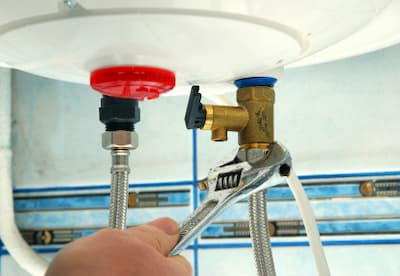Top Ways to Maintain Your Home's Hot Water System SuccessfullyBest Practices for Maintaining Your Home's Hot Water System
Click HereThis great article listed below relating to How to Maintain a Hot Water Heater in a Few Simple Steps is quite interesting. Read on and make your own personal final thoughts.

Warm water is necessary for everyday comfort, whether it's for a rejuvenating shower or washing dishes. To guarantee your warm water system runs effectively and lasts longer, regular maintenance is crucial. This article supplies useful tips and understandings on just how to preserve your home's hot water system to stay clear of disruptions and pricey repair work.
Intro
Maintaining your home's hot water system could seem overwhelming, but with a couple of simple actions, you can guarantee it operates efficiently for years to come. This overview covers everything from comprehending your hot water system to do it yourself maintenance pointers and knowing when to contact professional aid.
Significance of Keeping Your Hot Water System
Normal maintenance not just prolongs the lifespan of your hot water system yet also guarantees it runs efficiently. Disregarding maintenance can bring about decreased effectiveness, greater energy costs, and even early failure of the system.
Indications Your Hot Water System Requirements Upkeep
Understanding when your warm water system requires focus can prevent significant issues. Watch out for indications such as inconsistent water temperature level, strange sounds from the heater, or rustic water.
Understanding Your Hot Water System
Before diving right into upkeep tasks, it's practical to understand the fundamental parts of your hot water system. Normally, this consists of the hot water heater itself, pipes, anode poles, and temperature level controls.
Monthly Maintenance Tasks
Normal monthly checks can assist capture small issues before they intensify.
Purging the Water Heater
Flushing your water heater eliminates debris build-up, improving effectiveness and extending its life.
Monitoring and Replacing Anode Rods
Anode rods avoid deterioration inside the container. Inspecting and replacing them when worn out is important.
Checking and Readjusting Temperature Level Setups
Adjusting the temperature settings makes sure optimum performance and safety.
DIY Tips for Maintenance
You can do a number of upkeep jobs on your own to maintain your warm water system in top condition.
Checking for Leaks
Consistently evaluate pipelines and links for leakages, as these can lead to water damage and higher expenses.
Checking Pressure Relief Valves
Evaluating the pressure relief valve guarantees it operates appropriately and protects against too much pressure accumulation.
Protecting Pipes
Protecting hot water pipes reduces heat loss and can save energy.
When to Call a Professional
While DIY upkeep is beneficial, some concerns need expert know-how.
Complicated Issues Requiring Professional Aid
Instances consist of major leaks, electrical problems, or if your hot water heater is continually underperforming.
Routine Professional Upkeep Conveniences
Expert maintenance can include detailed examinations, tune-ups, and guaranteeing conformity with safety and security requirements.
Final thought
Regular upkeep of your home's warm water system is vital for effectiveness, longevity, and price financial savings. By complying with these tips and recognizing when to look for professional help, you can make certain a trusted supply of warm water without unexpected interruptions.
How to Maintain an Instant Hot Water Heater
Before tinkering with your hot water heater, make sure that it’s not powered on. You also have to turn off the main circuit breaker and shut off the main gas line to prevent accidents. Also turn off the water valves connected to your unit to prevent water from flowing into and out of the appliance. 2. When you’re done, you have to detach the purge valves’ caps. These look like the letter “T” and are situated on either side of the water valves. Doing so will release any pressure that has accumulated inside the valves while at the same time avoid hot water from shooting out and burning your skin. 3. When the purge valves’ caps are removed, you have to connect your hosing lines to the valves. Your unit should have come with three hoses but if it didn’t, you can purchase these things from any hardware or home repair shops. You can also get them from retail stores that sell water heating systems. Read the user’s manual and follow it to complete this task properly. When the hosing lines are connected, open the purge port’s valves. 4. You should never use harsh chemical cleaners or solutions when cleaning your unit. Make use of white vinegar instead. It should be undiluted and you’ll probably use about 2 gallons. 5. Now flush your water heater. This task should probably take about 40 minutes. We can’t give you specific directions for this because the procedure is carried out depending on the type, model and brand of your heater. With that being said, refer to the user’s manual. 6. When you’re done draining the unit, you have to turn off the purge port valves again. Remove the hosing lines that you earlier installed on each of the water valves. Put the valve caps (purge port) back in their respective places and be very careful so as not to damage the rubber discs that are found inside these caps. 7. Now that everything’s back in place, check your user’s manual again to find out how to reactivate your water heating system. 8. Once it is working, turn one of your hot water faucets on just to let air pass through the heater’s water supply pipes. Leave the tap on until water flows smoothly out of it. https://www.orrplumbing.com/blog/2014/september/how-to-maintain-an-instant-hot-water-heater/

I ran across that blog entry about What Kind of Maintenance Do Water Heaters Need? when exploring the web. Are you aware of anybody else who is truly interested in the niche? Please feel free to promote it. We recognize the value of your readership.
Further Details